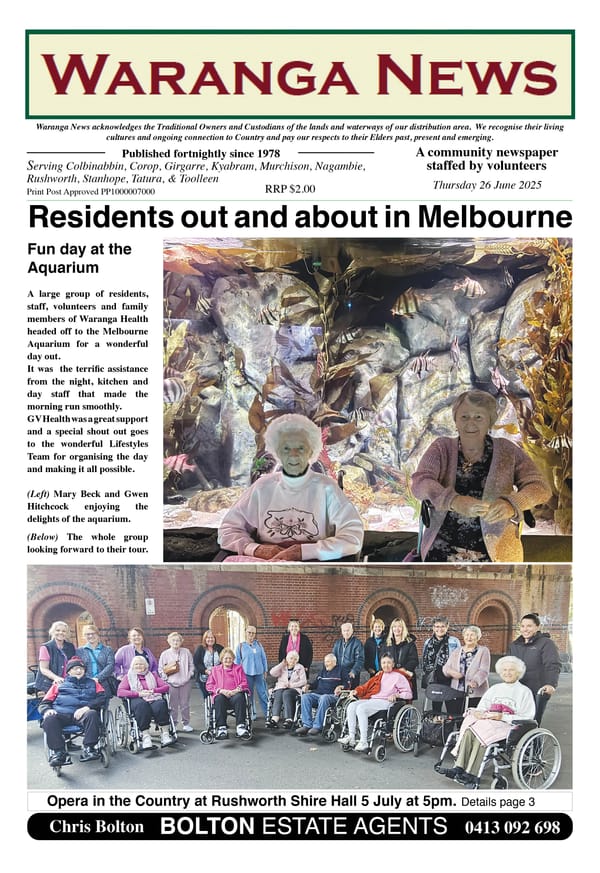1. Chinese connections

The Waranga area has strong Chinese historical connections, thanks largely to the influx of Chinese miners during the gold rush. Gold discoveries in this area in 1853 post-dated earlier finds in Victoria, which had sparked the first gold rushes to the new state, by a little over two years. As a result, there was already a relatively small number of Chinese miners in Victoria, some of whom were attracted to the local fields. The influx from overseas intensified over the next few years until numbers tapered off in the 1860s.
Going overseas in search of gold was not a new experience for the Chinese. For instance, many had been to the Californian gold rushes which had commenced in 1849. Quite a few also had some experience of gold mining in their home country, where gold was regarded as a valuable commodity and source of wealth.
These days, the Chinese connection to the local area is remembered through place names such as Chinaman’s Hill, Chinaman’s Flat, Chinaman’s and Mongolian Reefs and Chinaman’s Gully. Of course, the Cheong family has a strong connection to Whroo, with a well-known forest road named after them. Several local families can boast Chinese ancestors as part of their family trees. Both Rushworth and Whroo cemeteries have sections for burial places of Chinese people and there is at least one Chinese burial at Murchison.
RACISM ON THE GOLDFIELDS
As well as facing all the other hardships that affected the itinerant mining population, the Chinese were faced with blatant racism on the goldfields. Their very different language, culture and appearance made them stand out. They were often called “celestials”, which in this context meant “otherworldly”. They became targets for abuse simply because they were different.
Governments were under pressure to stem the flow of arrivals from China. The colonial governments imposed harsh taxes as a way of trying to dissuade people from entering the country. For those that had already arrived, residency taxes were applied which did not affect any other nationalities.
As well as experiencing day-to-day racism, the Chinese miners were also subjected to occasional outbreaks of extreme violence from other miners. Riots at places like the Buckland River in north-east Victoria and Lambing Flat in NSW were not uncommon.
PRINT MEDIA RACISM
The Chinese had to contend with a generally racist colonial press, who used the term “invasion” to describe the influx of miners from China. The same terminology was not used for all the miners from other parts of the world, who came to Australia in their tens of thousands during the goldrush years.
Newspaper editors fanned the flames of racism by consistently using terms like “gang of Chinese gamblers”, the “despised” or “wretched Mongolians” (even though most of the Chinese miners were not from Mongolia), Chinese “depradators”, “prowlers” and “demons” and “worthless members of the Chinese race”. They fostered the idea that Chinese labour would provide “ruinous competition” for Australian workers, even though many Australians had already left their jobs to go gold seeking and there was plenty of work available for everyone.
LOOKING FOR POSITIVES
Despite the racism that they faced, the Chinese made a positive contribution to the local Waranga community. They were able to supply a range of goods and services that would otherwise have been unavailable on the goldfields; as miners they were often experienced, hardworking and skilful with a tendency to be more persistent than their European counterparts; the vast majority were law-abiding citizens; they brought a different culture which made life on the goldfields a truly multicultural experience.
Many of the Chinese gold miners returned home to China at some point. However, a substantial minority stayed in Australia and went on to make an important contribution to the developing economies of the colonies, and later the new nation. Today, people who identify as having Chinese ancestry make up 5.5% of the Australian population (Source: 2021 Census). China is also Australia’s major trading partner. However, in some parts the media of today continue to go down the path followed by their predecessors, by consistently fearmongering when it could be promoting a much more positive relationship.1 CHINESE CONNECTIONS



